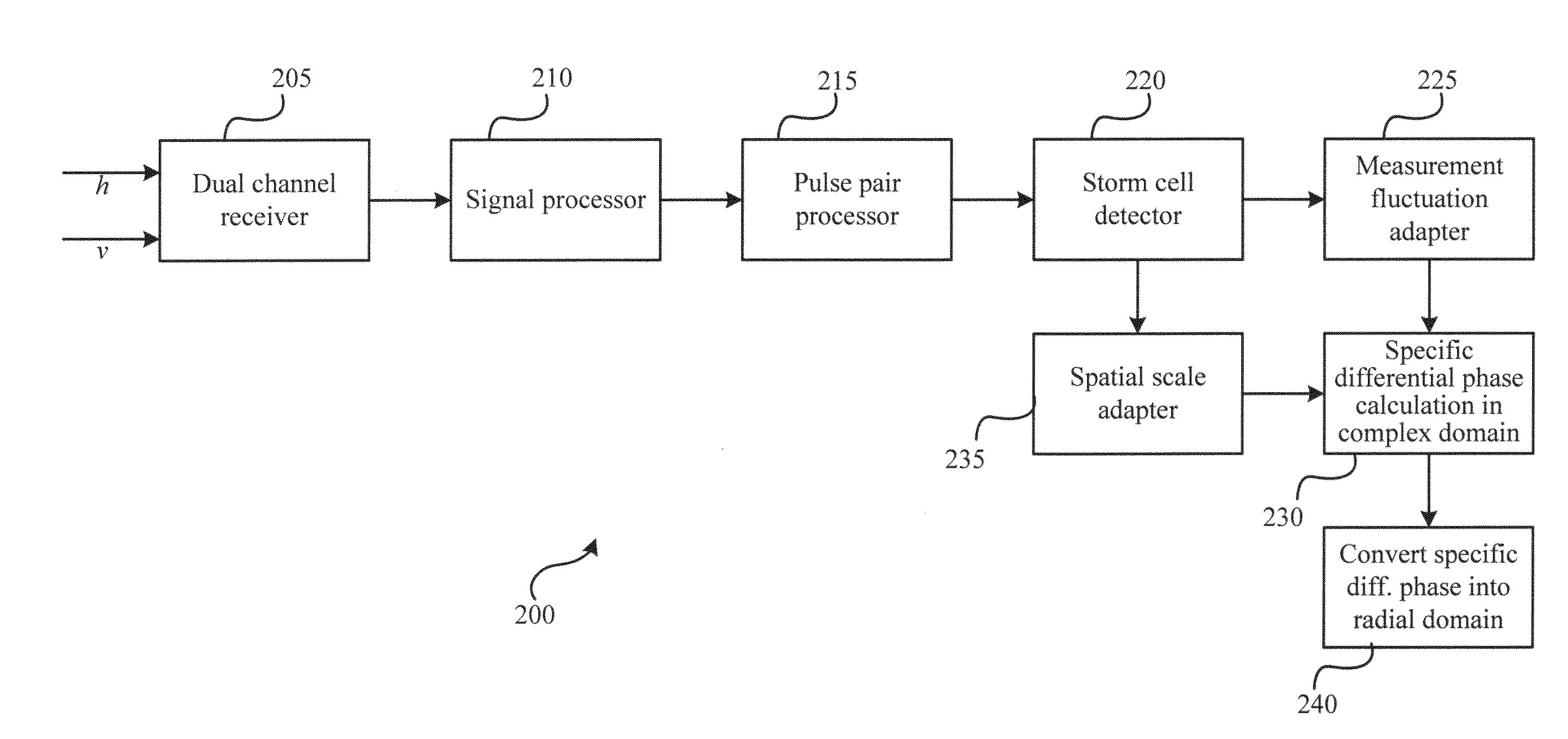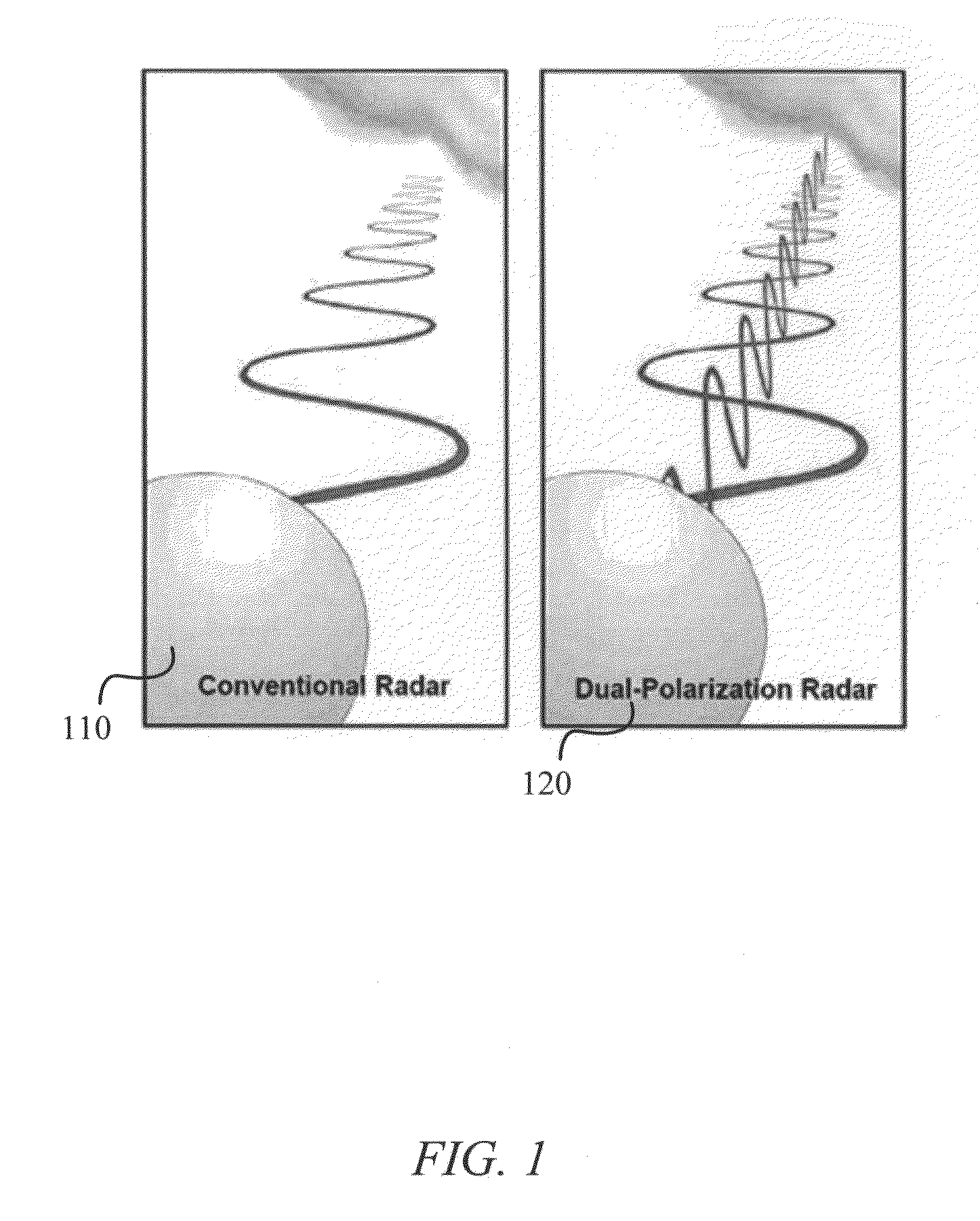Adaptive specific differential phase in dual-polarization radar
a technology of specific differential phase and radar, applied in the direction of instruments, measurement devices, climate sustainability, etc., can solve the problem of unstable numerical process of evaluating specific differential phas
- Summary
- Abstract
- Description
- Claims
- Application Information
AI Technical Summary
Benefits of technology
Problems solved by technology
Method used
Image
Examples
Embodiment Construction
[0018]FIG. 1 shows an illustration of a conventional radar system 110 with a single polarization state compared with a dual-polarization radar system 120 (or polarimetric radar system). Dual polarization radar systems 120 can transmit and receive two orthogonal polarization states, often at vertical polarization and horizontal polarization as shown in the figure. Dual-polarization radar systems can provide multi-parameter data including differential reflectivity, co-polar correlation coefficients, linear depolarization ratio and / or specific differential phase.
[0019]The differential reflectivity is a power ratio of the reflected horizontally and vertically polarized returns. Among other things, it can be a good indicator of rain drop shape and / or size. The co-polar correlation coefficient ρhv is a statistical correlation between the reflected horizontally and vertically polarized returns and can be a good indicator of regions where there is a mixture of precipitation types, such as r...
PUM
 Login to View More
Login to View More Abstract
Description
Claims
Application Information
 Login to View More
Login to View More - R&D
- Intellectual Property
- Life Sciences
- Materials
- Tech Scout
- Unparalleled Data Quality
- Higher Quality Content
- 60% Fewer Hallucinations
Browse by: Latest US Patents, China's latest patents, Technical Efficacy Thesaurus, Application Domain, Technology Topic, Popular Technical Reports.
© 2025 PatSnap. All rights reserved.Legal|Privacy policy|Modern Slavery Act Transparency Statement|Sitemap|About US| Contact US: help@patsnap.com



